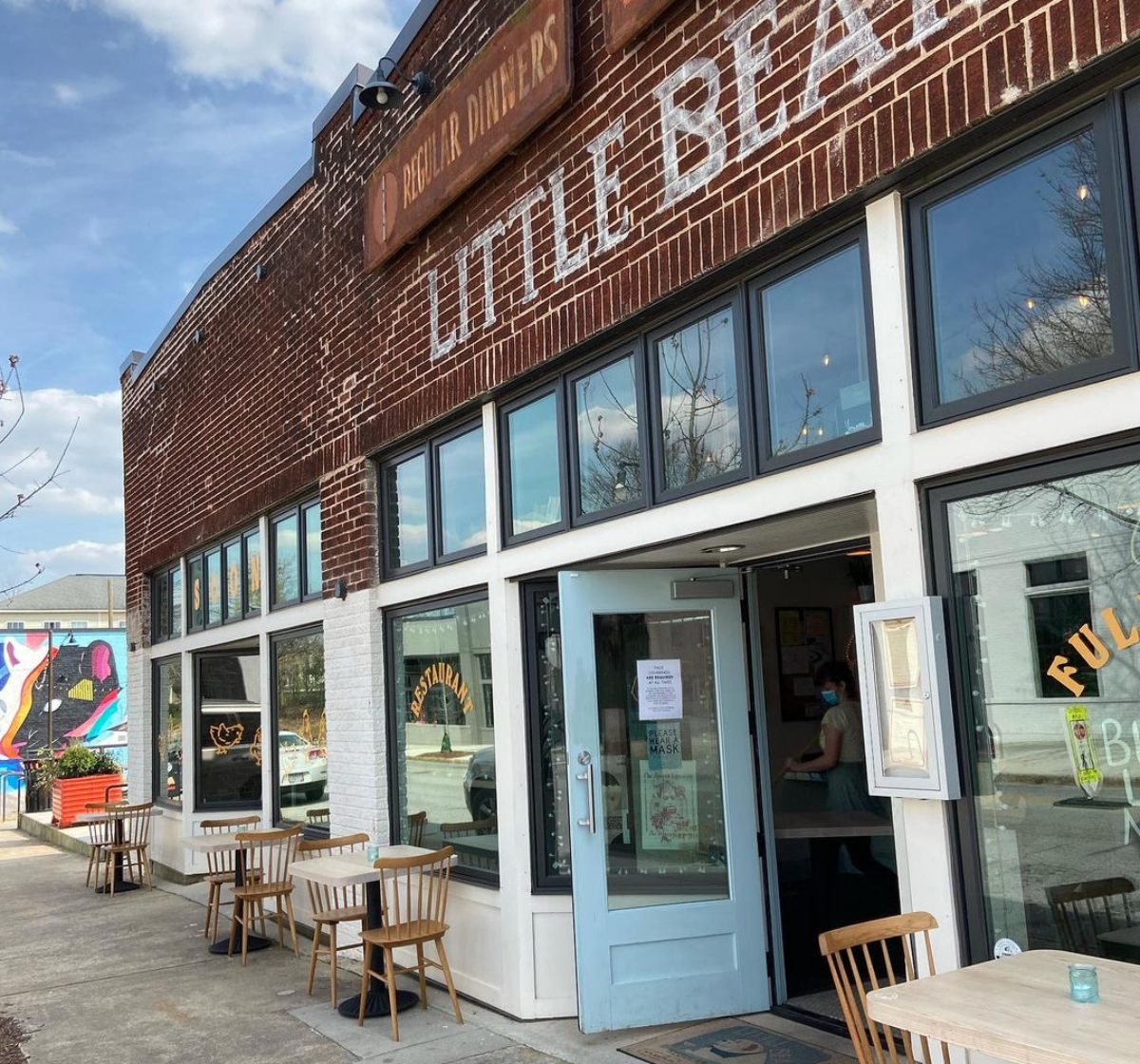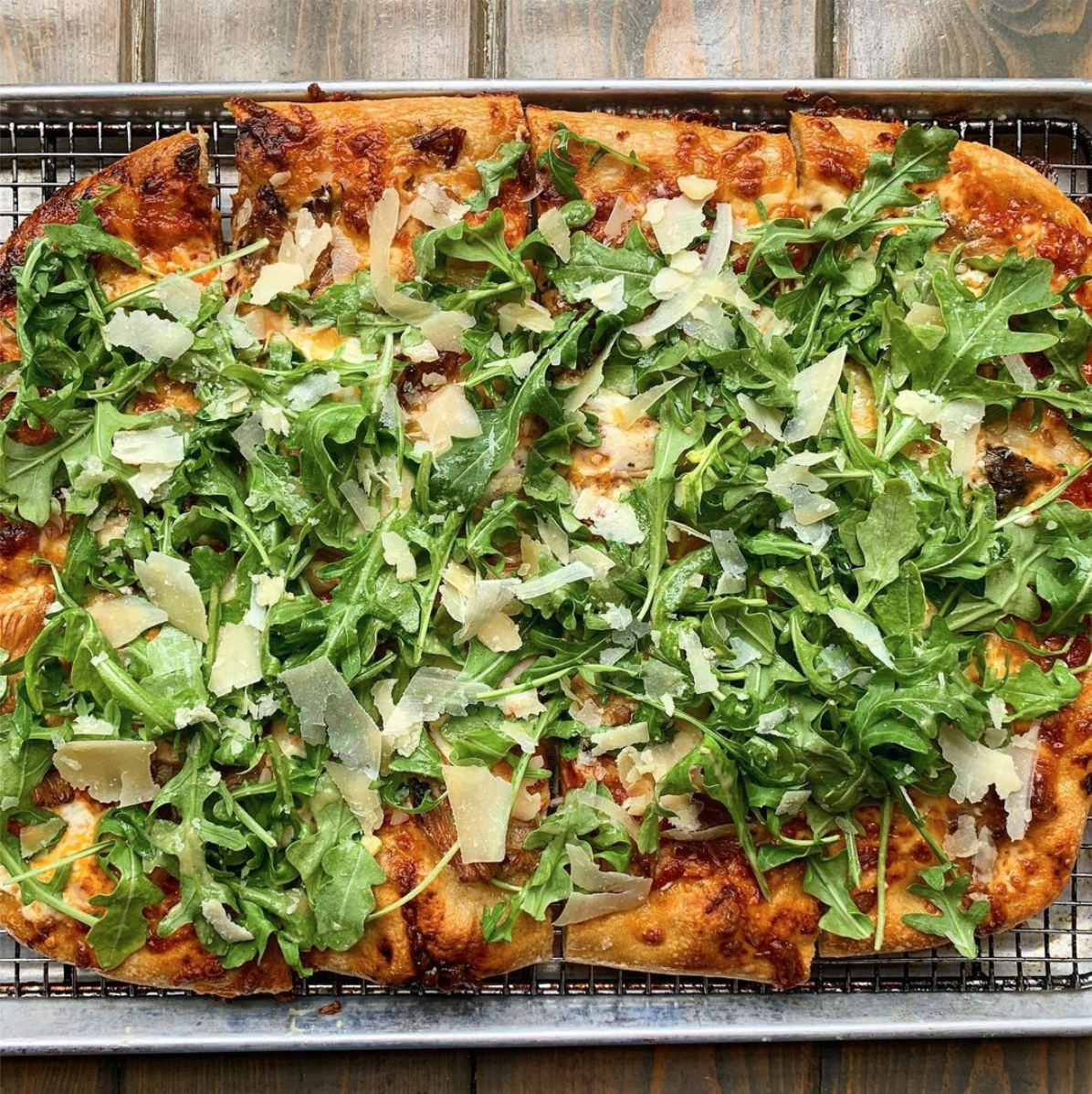For These Atlanta Restaurants, the Pandemic Has Been One Long Wind-Up to Opening Day
Image courtesy of @littlebearatl
Jarrett Stieber can’t wait for May 5. It’s the day his restaurant, Little Bear, will open its dining room for limited reservations. Though the pandemic shut Little Bear’s doors a year ago, this is a grand re-re-opening seven years in the making.
Stieber, a James Beard-nominated chef and former owner of popular pop-up Eat Me Speak Me, has worked in restaurants full-time from age 15. A year into his pop-up, Stieber began looking for loans to secure a location for a brick-and-mortar restaurant. It took six years, but he eventually landed on a Georgia Avenue spot in the growing neighborhood of Summerhill.
Twenty months and half a million in renovations later, Little Bear (named after the Stiebers’ great Pyrenees, Fernando) opened its doors to immediate success. The 30-seat, open-kitchen space feels as playfully irreverent as the menu — in which prix-fixe dinners are titled “Just F*ck Me Up, Fam” and desserts are garnished with “pretentious flowers.”
The Stiebers had $288 to their name on opening night, but they were selling out and creating buzz. Two weeks later, they closed their doors.
“I never wanted to do to-go,” Stieber says, “but we didn’t have a choice. We didn’t have the resources to give up.”
Little Bear was not alone on this rollercoaster. Two miles away, in Cabbagetown, JenChan’s was finally gaining traction and making money when the Chans had to return to a takeout-only model.
Jen and Emily Chan were slinging to-go, family-style meals as part of a “Delivery Supper Club” long before COVID made it trendy. In September of 2019, the couple decided to open an accompanying restaurant in their Cabbagetown neighborhood to give guests the full “mostly Southern, mainly Asian” experience — including wings, rice bowls, a Mongolian beef cheesesteak and, most recently, Asian-inspired pizza.
Pizza was “a Hail Mary,” says Emily Chan — something different and easy to get the neighborhood interested in their food again. “At one point, it consisted of 80% of our restaurant sales. Now that the full menu is back in place, we sell about 50% pizza.”
Image courtesy of @jenchansdeliverysupperclub
“It felt like the world collapsed around me,” says Emily Chan of those first few weeks. “But it didn’t. You wake up the next day, and everything is still there.”
JenChan’s now allows dine-in and sidewalk service at limited capacity (about 70% of their space is still blocked off). In April, the city plans to install a temporary parklet outside the restaurant to expand patio space.
“Being allowed to have a dining room outside is a gamechanger for us,” Emily Chan says of the parklet. “People still want to be served, but they want to be served safely.”
The Chans’ cautious optimism is not unfounded. Karen Bremer, president of the Georgia Restaurant Association, says, “Americans have a huge, pent-up demand” for the restaurant experience. The GRA has worked closely with Governor Brian Kemp over the past year to allow continued to-go and curbside service and to communicate relevant resources in plain language.
Despite new executive orders easing restrictions on dine-in service, Jarrett Stieber is waiting until his staff is fully vaccinated to reopen Little Bear’s doors. He can’t afford to close for a week or more if someone on his eight-person staff tests positive.
Online ordering, QR codes and Instagram accounts are now de rigueur in the world of post-pandemic dining. The most frustrating part, Stieber says, has been “thinking of a new schtick” to keep people interested week-to-week.Stieber still relies on to-go orders — his Instagram announcement that dine-in reservations are open for May was followed by, “Please continue to support our takeout business as much as possible between now and May so that we can successfully relaunch” — but he is more than ready to have guests back in his space, experiencing his food the way he intends it.
Emily Chan welcomes the return of dine-in as well. She looks forward to “seeing smiles instead of rows of take-out boxes. And being on the line in the kitchen and hearing the laughter and clinking of glasses in the dining room.”
Almost as an afterthought, she adds, “I am ready to have that intimacy we used to have with our guests back.”
Originally published at The Comeback.


